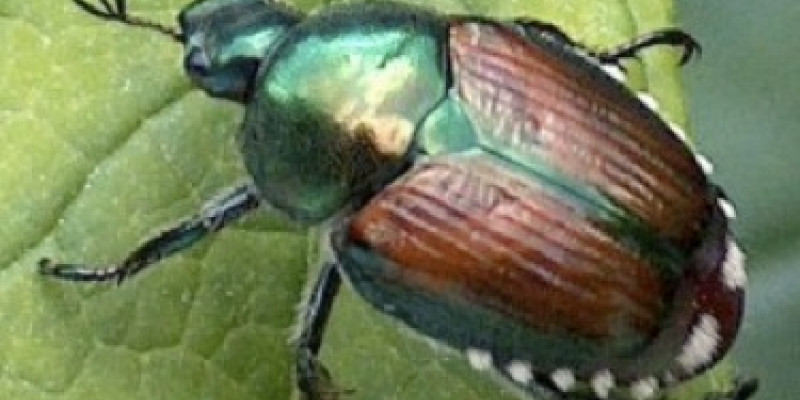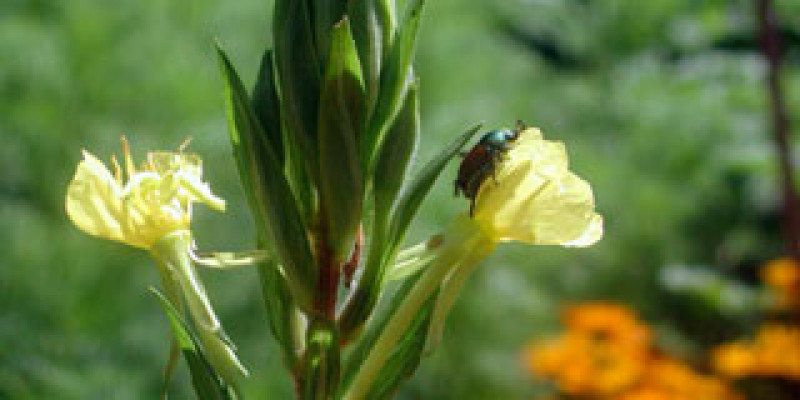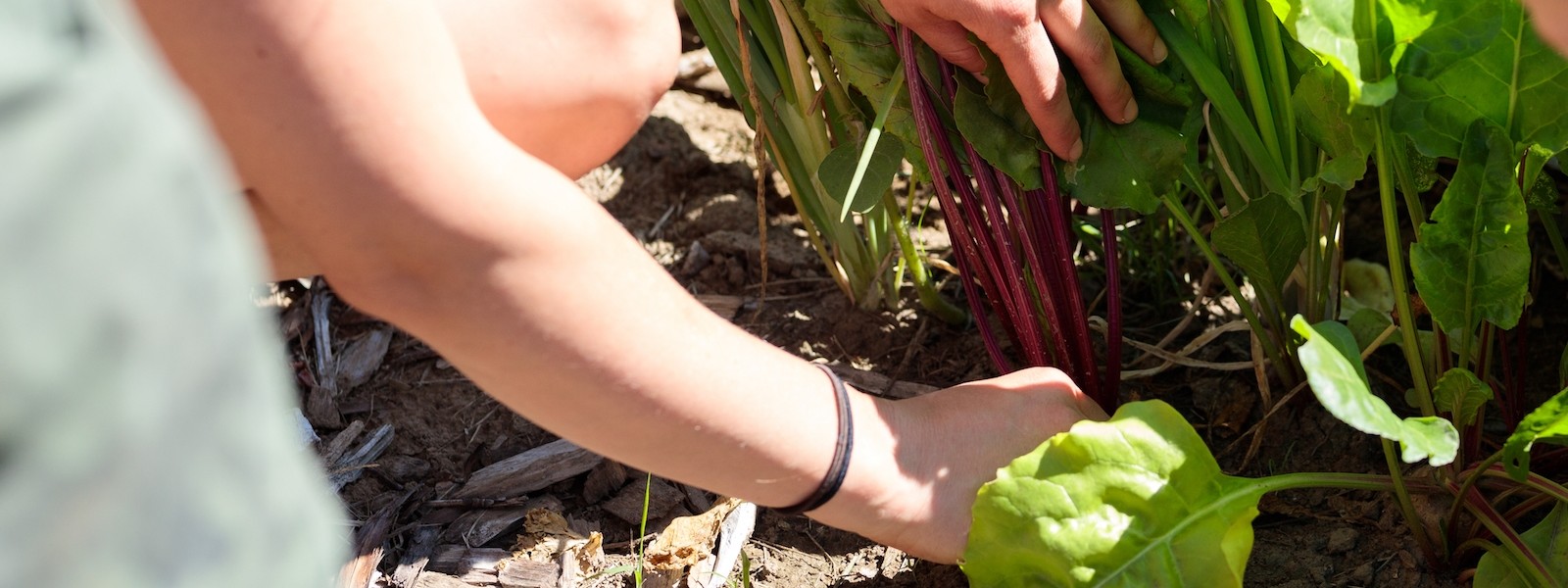Pest: Japanese Beetle
Adult Japanese beetles are very common in gardens in mid-summer. Getting them under control is quite important as they can do great damage if left to their own devices.
They are iridescent green with copper wing covers and measure about 1/2” long and 1/4” wide. Larvae are C-shaped, plump grayish white grubs with light brown heads.


Life Cycle
Overwintering larvae deep in the soil move toward the surface in spring to feed on roots, pupating in early summer Adults emerge, feed on plants, and lay eggs in late summer: eggs hatch into larvae that overwinter in the soil. Adult beetles live for only 30-45 days but can cause significant damage.
Plants They Attack
Grubs feed on the roots of turf grass and many ornamentals. Adults feed on over 300 species of landscape plants including; cherry and plum trees, corn silks, grapes, raspberries, rhubarb, roses, and zinnias.
Spot the Damage
They feed and mate in groups, eating the leaf surface while leaving the leaf veins intact, causing skeletionization. As they feed, they release attracting pheremones to lure more beetles to feed and breed on choice plants.
Preventative Actions
- Withhold water from your lawn in late summer when the females are laying eggs. Eggs and young grubs need moisture to live. Allow your lawn to go naturally dormant in summer’s heat and you’ll be reducing next year’s population of beetles.
- Knock the adults into soapy water or squash them. Since feeding beetles attract more beetles, early and frequent hand=picking goes a long way.
- Vacuum adults off with a vacuum cleaner or dust buster.
- Attract native species of parasitic wasps and flies which are the natural predators of these beetles.
- Use a natural trap crop like Wild Evening Primrose. The adults love this plant, will accumulate on it and then you can shake the bugs off of this plant. Check out our tip on this method.
NOTE: Traditional beetle traps actually lure in more beetles than they trap, causing heavier feeding in areas where the traps are located.
Live Biological Controls
Parasitic wasp is a very effective beneficial nematode (Heterorhabditis spp. or Steinernema carpocapsae).
Sources
CCF staff
Good Bug, Bad Bug by Walliser 2008
The Organic Gardener’s Handbook by Ellis and Bradley 1996
Interested in learning more? The Grower’s Library at Johnny’s Selected Seeds may have the information you’re looking for.

